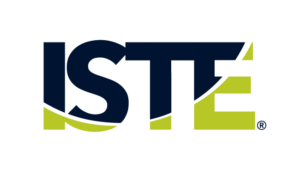 How can state leaders help new educators understand how to best leverage technology for classroom instruction? Educator preparation programs have the opportunity to help candidates use digital tools and resources to make activities and assignments more meaningful and relevant for all students, encouraging creativity, communication, problem-solving and inquiry-based learning. Connecticut has made significant strides in preparing educators to use technology effectively. Here, Doug Casey, executive director of the Connecticut Commission for Educational Technology (CCET), describes the importance of thoughtful investments into educator preparation and shares his advice for other state leaders.
How can state leaders help new educators understand how to best leverage technology for classroom instruction? Educator preparation programs have the opportunity to help candidates use digital tools and resources to make activities and assignments more meaningful and relevant for all students, encouraging creativity, communication, problem-solving and inquiry-based learning. Connecticut has made significant strides in preparing educators to use technology effectively. Here, Doug Casey, executive director of the Connecticut Commission for Educational Technology (CCET), describes the importance of thoughtful investments into educator preparation and shares his advice for other state leaders.
How did Connecticut realize higher education’s role in supporting K-12 educators’ technology use?
It started with the opportunity to get students and educators online. CCET oversees the Connecticut Education Network, which connects every district and public university, as well as most libraries, private colleges and towns to the internet via a robust and secure fiber backbone. We also provide the Digital Equity Toolkit, a playbook to help local communities address the homework gap, and are piloting Eduroam to help students get online at various community centers.
That’s a lot of resources, but the ways in which educators leverage them vary widely, partly because there are no state-level requirements around technology competencies. Some higher education institutions navigate this lack of guidance by following the CAEP [Council for the Accreditation of Educator Preparation] accreditation standards. But without a robust framework around specific competencies, there can often be a disconnect between what new educators are learning and the ways that they actually use the technology in the classroom.
How did Connecticut begin engaging in changes necessary to improve educator preparation?
Statewide surveys showed that the effective use of technology was important to educators, parents and district leaders, as “90 percent of respondents [indicated]... the [ISTE] Standards address well the skills and competencies that students need for college and careers.” Following their input, we used the ISTE Standards to develop a set of policy recommendations for local boards, including those that address educator preparation and professional development. Our state board also formally adopted the ISTE Standards for Students. We hope that these actions will encourage districts and educator preparation programs to require all educators to use technology effectively to accelerate learning.
How are you ensuring that preparation programs continue improving practices?
CCET works closely with our Digital Learning Advisory Council, including Fairfield University, which has been a leader in building effective models for educator preparation. Fairfield’s Educational Technology Director Joshua Elliott has found the ISTE Standards to be an effective framework for incorporating technology into their program.
Fairfield is currently pursuing several pathways to support this work, including the continuous improvement of an Introduction to Educational Technology course, grounded in the ISTE Standards, and an Emerging Technologies course, which explores how technological innovations can be used to accelerate learning. Fairfield has also earned ISTE’s Higher Education Recognition, joining such institutions as Central Michigan University and the American College of Education, which have demonstrated alignment of their programs with the ISTE Standards for Educators. Finally, Fairfield will become a provider of ISTE Certification, so that graduates are certified in technology-empowered pedagogy.
What advice do you have for other states engaging in this work?
Removing barriers to effective ed-tech use from a higher education standpoint requires coordination on multiple fronts. State leaders must engage with stakeholders who influence the supply of educators (e.g., higher education) and those responsible for the demand (e.g., districts who control hiring preferences). By bridging these groups’ interests and creating a shared vision around educator preparation, state leaders can help fulfill our commitment to preparing students for success in college and beyond.









